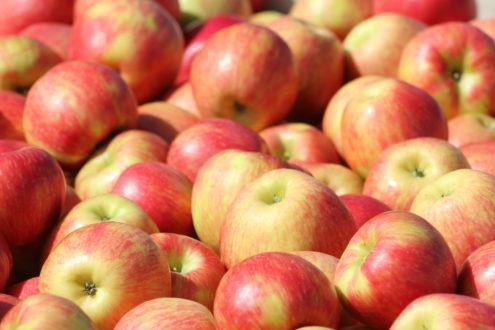Apr 29, 2020How to create a plan for apple thinning, which is science and art
Apple bloom is quickly approaching and with it, growers will have many decisions to make for the season ahead. One of the biggest – to thin or not to thin? To me, thinning is a combination of science and art based on key insights from your orchards. It’s like taking a block of clay and getting inspired to take a little off here and there until you craft your desired outcome.
Knowing how to start and find success is tricky. However, there are several problems that can occur by not thinning. Over setting your apple crop can lead to smaller, less profitable apples, tree damage due to weight of excess fruit and decreased number of fruiting buds for next season. Proper and timely thinning with plant growth regulators (PGRs) and hand thinning can lead to overall tree heath, improved fruit characteristics and increased harvest efficiency.
To start, think back on the history of your orchard blocks and ask yourself the following questions:
• Are the trees within each orchard block strong or weak?
• Is the nutrition program aligned to the health of the trees?
• What is the shape of the tree? This will dictate coverage availability for chemical thinning. If you have a fruiting wall you can more easily make contact vs. a deeper tree canopy with fruit inside that may be harder to reach.
Once you have considered these factors and how might they affect thinning success, use this guide to create a plan.
Step one: Revisit last year’s harvest and determine goals for this year.
Were your trees heavy or light setting last year? Trees default into alternate bearing, so if you had a heavy-set last year, expect this year to be lighter. A grower’s philosophy should be to even this out year after year with your thinning program.
Step two: Monitor blooms from the start.
• If bloom is light: A thinning PGR might not be for you since you are trying to set as much fruit as possible. However, you can still consider a PGR to help extend the bloom window to allow more time for pollination to occur or extend bloom in challenging weather conditions.
• If bloom is heavy: A lot of flowers will likely mean a full set. You will need to thin your trees back to lessen the amount of fruit growing. Growers should take a “nibble approach” where they lightly thin at each growth stage and assess additional applications as the tree matures.
Step three: Craft a plan.
Consider labor availability and timeline.
Do you have an adequate crew at this time for hand thinning? Hand thinning is effective all season long but is time and labor intensive. Chemical thinning can help from a labor standpoint.
Next, remember you need something to treat.
Coverage is critical for a thinning PGR to be effective – the compound must come into contact with targeted tissue.
Consider the weather.
Aim for slow drying conditions followed by warm temperatures when chemical thinning to maximize bloom/fruitlet tissue absorption and effectiveness.
Most importantly, thin little by little and pay attention to timeline.
Assess trees at:
• Bloom, petal fall, 5-8 mm, 12-15 mm, 20 mm.
The best practice is to be constantly assessing to determine needs. Using a PGR for apple thinning is considering a full toolbox of products and determining how and when to use each tool. Sometimes you need a screwdriver, sometimes you need a hammer and sometimes you’re going to need both. There are a wide variety of products available that all promote different outcomes. Ammonium thiosulfate (ATS) products are going to be most beneficial early season at full bloom, where a 6-benzyladenine (6-BA) or Naphthaleneacetic Acid (NAA) product would be beneficial from after petal-fall to around 12 mm, depending on individual goals.
Creating a thinning a plan can help you start in the right direction for creating your masterpiece this year.
– Allison Walston, field market development specialist, Valent U.S.A.
First published by the U.S. Apple Association as part of its Thought Leadership series. Republished on the permission of the U.S. Apple Association.















